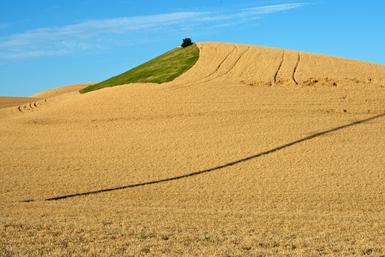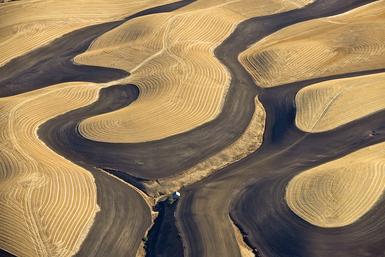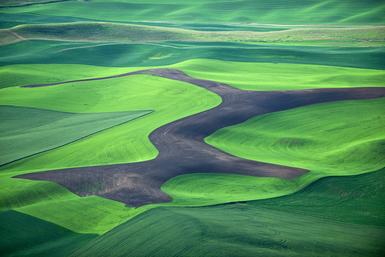On Being Away 2014
Those of you that are subscribers probably know that I have been away for the past month in Santa Rosa, California. Living in a rented cottage in the hills about 20 minutes from town I have tasted the experience of living in the country and watched the light come up each morning in this very beautiful part of the world. Often I've been here at the end of the day when the sun goes down and fades away in a final blaze of glory.
 From the deck of the cottage where I am staying just after the sun came up.
From the deck of the cottage where I am staying just after the sun came up.
 And across the valley at dawn on a rainy and foggy morning.
And across the valley at dawn on a rainy and foggy morning.
 And just before sunset.
And just before sunset.
My point isn't so much the pictures I've made here where I've been living, although I've enjoyed making them and am glad I have them. It is that I have been able to have this experience, to revel in the sheer luxury of waking up each morning to the challenge of "what do I do today?" and "where do I go to photograph?"
Can you imagine? No TV, no phone, some internet so that I can post these blogs, high up on a ridge overlooking a valley and hills on either side, a dog named Din that comes over every morning from the neighbors to say hi, and the biggest problem I've got is do I go to the coast or inland up into the hills and mountains behind me to photograph. Yes, this is the luxury of retirement and affordability, yes it will come to an end and when home there will be chores, errands, hassles, things I have to do but don't want to do (April 15 is approaching, for instance), but I have had this time, this month, in which I could indulge a lifelong passion to see and to see with a camera in hand.
Today, for instance I am confronted with the choice of heading down the 101 to the last exit before the Golden Gate Bridge to photograph again at the "headlands". Why? Let me show you:

I made this picture across the parking lot from where you stop to walk through the WW II bunker to get a view of the bridge from above. There is a raindrop blurring the image in the lower right. Could I fake this and remove it in PS? Probably. But it would be better if I was there again standing in front of this very strange rock mound in no rain.
Or, do I head back to the coast again today to shoot more Tafoni? What? Tafoni? Yes. Italian for "weird rock formations", pretty much. Thanks to a friend's tip about the State Park at Salt Point I found these:






OMG! Amazing, yes? As I am in my last few days I'd better stop writing and get moving as the light is coming up, it is gray out but not raining and I've got places to go, clearly.
I don't know if this life I am leading is the reward for a career that was at times hard work or not but it sure is a very good thing. I am thankful for my lucky stars.





















 I had a really wonderful time photographing this over the next couple of hours. As the sun got higher the shadows changed and became shorter. This was one of the times where "it" didn't matter much. It was what I did to "it" that did matter.
I had a really wonderful time photographing this over the next couple of hours. As the sun got higher the shadows changed and became shorter. This was one of the times where "it" didn't matter much. It was what I did to "it" that did matter.

 I can remember asking students to talk about new work they were showing in class. Often they would not know much more than we did, the ones seeing the prints for the first time. Why? Because the photographer very often doesn't know much about what they've photographed, often they've made a picture of it to find out more about it. How can someone know all about something at 1/250 of a second? They can't. This felt like that the other day shooting frame after frame in this empty sunlit skatepark in Healdsburg , CA. Starting in I knew nothing about what I was doing. I was going down a path of learning about it and my abilities with it as I was doing it. I am still learning about it as I present it here in this post to you.
I can remember asking students to talk about new work they were showing in class. Often they would not know much more than we did, the ones seeing the prints for the first time. Why? Because the photographer very often doesn't know much about what they've photographed, often they've made a picture of it to find out more about it. How can someone know all about something at 1/250 of a second? They can't. This felt like that the other day shooting frame after frame in this empty sunlit skatepark in Healdsburg , CA. Starting in I knew nothing about what I was doing. I was going down a path of learning about it and my abilities with it as I was doing it. I am still learning about it as I present it here in this post to you. 














